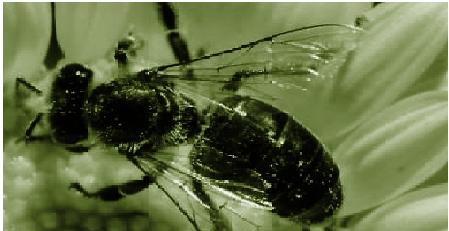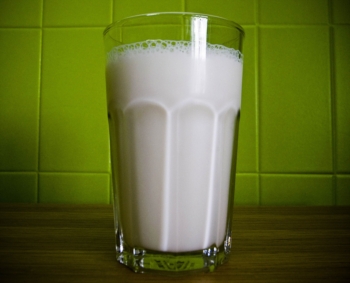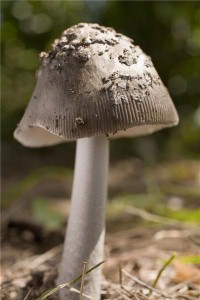ScienceDaily (Mar. 29, 2012) — In addition to being among his most vibrant and celebrated works, Vincent van Gogh's series of sunflower paintings also depict a mutation whose genetic basis has, until now, been a bit of a mystery. The most common, wild-type sunflower variety is s…
E stá a nascer um sistema de identificação de espécies celulares com base no exame de uma pequena porção do DNA dos organismos. O Consórcio para o Código de Barras da Vida conta com mais de 200 instituições de 50 países. O seu principal programa é o iBOL – International Barcode of Life, n…
Um estudo internacional, liderado por Francisco Cruz, investigador da Faculdade de Medicina do Porto e director do Serviço de Urologia do Hospital São João, provou que o uso de botox é “eficaz e seguro” no tratamento da incontinência urinária. “É muito mais eficaz do que os tratament…
Compostos bioactivos de frutos tem efeitos benéficos para a saúde humana As amoras silvestres nativas da flora portuguesa têm um efeito neuroprotector superior ao das variedades disponíveis comercialmente, revela um estudo realizado pelo laboratório da Biologia da Doença e do Stress d…
Um estudo realizado por cientistas canadianos e holandeses publicado na Nature Methods mostra que, tal como os seres humanos, os ratos têm expressões faciais que revelam dor ou desconforto.Como tal, foi criada uma escala para classificar estas expressões dos ratos que permitirá calcular…
Investigadores propõem associação de fármaco para tratar infecções provocadas pela bactéria 'Staphylococcus aureus' Uma equipa de investigadores do Instituto de Tecnologia Química e Biológica (ITQB), da Universidade Nova de Lisboa em Oeiras, colaborou no estudo, publicado na «Sc…
Prostaglandin D 2 findings offer hope for Homer's dome. Researchers have identified a biological pathway previously unknown to have a role in male pattern hair loss. Published today in Science Translational Medicine 1 , the study finds that a lipid compound called prostaglandi…
Cientistas da Universidade da Califórnia, em San Diego, desenvolveram um hidrogel injetável que promete ser uma forma eficaz de tratar danos no tecido do músculo do coração causados por infarte. O tecido conjuntivo em pedaços passa por uma limpeza profunda dentro de um béquer para remo…
Um jovem investigador português e a sua equipa estão a estudar um método capaz de matar as células cancerígenas privando-as dos nutrientes de que precisam para se multiplicarem. Embora ainda em fase de validação pré-clínica, esta poderá vir a ser uma alternativa à tradicional quimioterap…
Investigadores da Universidade de Granada, Espanha, desenvolveram uma ferramenta de software que faz uma estimativa precisa do risco que uma pessoa ou determinado grupo populacional têm de sofrer de doenças cardíacas. Os investigadores incluíram no seu estudo uma amostra de três mil pac…
Anticorpo contra Alzheimer Foram identificados pela primeira vez anticorpos que bloqueiam o processo de desintegração das sinapses na Doença de Alzheimer . A descoberta aumenta as esperanças de um tratamento para combater o declínio cognitivo logo no início da doença. A doença d…
Tal como os humanos, as abelhas têm personalidade, umas são mais ousadas e exploradoras, outras mais cautelosas e “caseiras”, revela um estudo publicado na revista Science. Segundo a investigação, citada pela agência Efe, as abelhas, insectos sociais que vivem em comunidades muito organ…
É um kit simples que pode ser usado em casa e permite fazer uma auto-colheita para deteção do cancro do colo do útero, o segundo tipo de cancro mais frequente nas mulheres a nível mundial. O inovador Teste da Mulher foi lançado no mercado, no passado dia 8 de março, Dia Internacional da…
Foto © Cedars-Sinai Heart Institute Até hoje, os danos resultantes de enfartes no coração eram considerados irreversíveis. Mas uma equipa de cientistas dos EUA desenvolveu uma terapia celular que consegue regenerar o coração após um ataque cardíaco. Esta equipa de cientistas do …
Travar ou mesmo prevenir o aparecimento das células malignas responsáveis por alguns tipos de cancro da mama pode passar por um gesto tão simples como beber leite. A conclusão faz parte de um estudo conduzido pelo Centro de Engenharia B…
People under the influence of magic mushrooms have given doctors a new insight into the how the drug works. The psychedelic toxin contains a substance known as psilocybin which creates the high that many experience when taking the drug. Researchers wanted to find out what effect the …
Microneedle patch. (Credit: Image courtesy of Emory University ) Recent research found that microneedle vaccine patches are more effective at delivering protection against influenza virus in mice than subcutaneous or intramuscular inoculation. A new, detailed analysis of the earl…
Mobilidade perdida pode ser restaurada com próteses comandadas pelo pensamento O investigador Rui Costa Fotografia © Nuno Pinto Fernandes/Global Imagens As regiões e os processos cerebrais envolvidos em tarefas físicas, como andar de bicicleta ou tocar piano, ou na sua aprendizagem,…
Um dogma cai e um novo campo de tratamentos de fertilidade nasce. Uma equipa de cientistas confirmou a existência de células nos ovários de mulheres adultas equivalentes a células estaminais, com o potencial de produzir óvulos. A descoberta publicada agora na revista Nature Medicine abr…
Why are there two sexes? It’s a question that has long perplexed generations of scientists, but researchers from UCL have come up with a radical new answer: mitochondria. Using a new mathematical model, the team led by Dr Nick Lane and colleagues from the UCL CoMPLEX, and the Research …


















